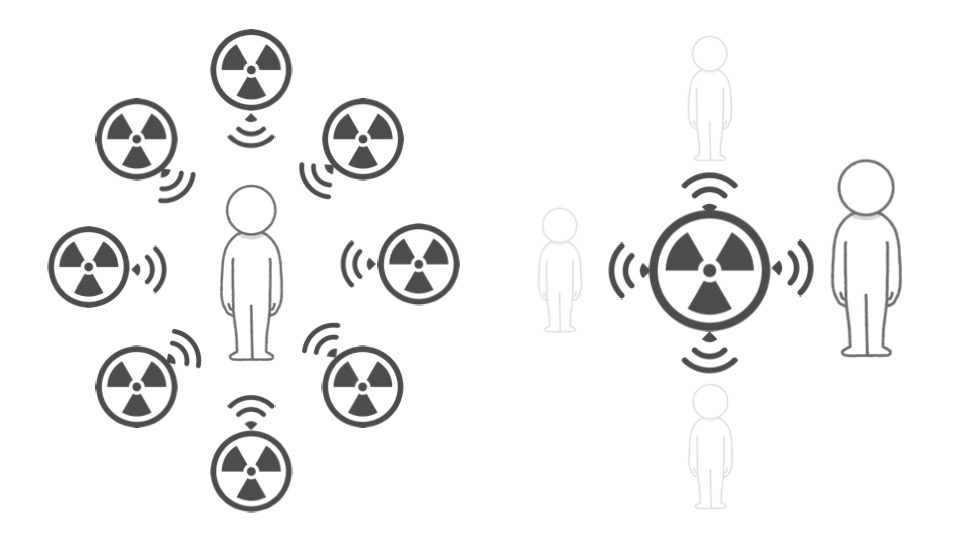Hello, everyone. My name is Daichi, an expert providing the information on the radiation issues in an easy-to-understand manner.
Last time the categories of exposure situations were covered in this article.
This time as a sequel of the article, the following questions will be responded.
– What do ‘the categories of exposure’ mean and what are they specifically?
– What is the basic concept of the radiation protection under the planned exposure situations?
Table of contents of this article
- (Categories of exposure are also covered) Categories of exposure situations (Vol. 2)
- Occupational exposure
- Medical exposure
- Public exposure
- Basic concept of radiation protection under the planned exposure situations
- Dose limit
- Dose constraint
- Summary
I have been involved with the radiation-relevant issues, like the policy on the decontamination activities and the management of the Interim Storage Facility, after the accident of the Fukushima Daiichi Nuclear Power Plant in 2011.
I received a doctorate in the field of radiation, while working in Fukushima.
(Categories of exposure are also covered) Categories of exposure situations (Vol. 2)
The following three categories of exposure are defined in the documents of the ICRP (International Commission on Radiological Protection) or other international organization.
– Occupational exposure
– Medical exposure
– Public exposure
Each type of exposure is elaborated below.
Occupational exposure

The occupational exposure is, to put it simply, as its name represents, the exposure to radiation during works.
For example, the following exposures correspond to the occupational exposure.
– Exposure during experiment using radioactive sources
– Exposure during decontamination activities after an accident of a nuclear power plant
Medical exposure

The medical exposure is, as its name also represents, the exposure to radiation to patients and their familiy during medical treatments.
For example, the following exposures correspond to the medical exposure.
– Exposure to a patient during medical checkup or treatment
– Inevitable exposure of family to support the patient
Public exposure

On the other hand, it might be a little bit difficult to understand, but, the public exposure is the exposure other than the occupational and the medical exposure and it is the exposure which people take in their daily life.
For example, the following exposures correspond to the public exposure.
– Exposure to radiation emitted from radioactive materials in the earth and atmosphere
– Exposure to radiation emitted from radioactive materials derived from intake of foods
Basic concept of radiation protection under the planned exposure situations

So, what is the difference of the approach for the radiation protection under each ‘exposure situation’ and ‘exposure category’?
To put it simply,
By multiplying 3 exposure situations (planned, emergency and existing) by 3 exposure categories (occupational, medical and public), 9 cases can be assumed, but this blog mainly focuses on the exposure relevant with decontamination activities.
Therefore, the medical exposure is at this moment regarded as out of scope, and the following 6 cases will be considered:
3 exposure situations (planned, emergency and existing) by 2 exposure categories (occupational and public)
First, let me elaborate the concept of radiation protection under the planned exposure situations.
Importantly, the following concepts need to be understood:
– Dose limit
– Dose constraint
Both concepts are applicable basically only under the planned exposure situations.
Dose limit

The dose limit is a value to reduce the exposure dose as much as possible, derived from the radioactive sources to be managed.
The following points, however, need to be kept in mind.
– Even if the dose is less than the dose limit, based on the principle of optimization of radiation protection and safety, the continuous efforts need to be made to reduce further the exposure dose, as long as the principle of justification is met.
– The dose limit is not the border between the danger and the safety. Therefore, it doesn’t mean that dose more than the dose limit surely causes negative impact on people’s health.
Please visit this article, if you would like to know more about the Three Fundamental Principles of Radiation Protection.
Specifically, ICRP (International Commission on Radiation Protection) basically recommends the following dose limits as examples, although for some organs more detailed recommendations are applied.
– Public exposure (effective dose): 1mSv/y
– Occupational exposure (effective dose): 100mSv per 5years and 50mSv per every single year
Dose constraint
As is the case with the reference level (elaborated in this article), the dose constraint is an important value to meet the principle of the optimization for radiation protection and safety.
The dose constraint is a value focusing more on each radioactive source, while the dose limit is a value focusing on a representative person to be exposed to radiation (Please see below figure.)
Regarding the dose constraint, the following points needed to be kept in mind.
– Unlike the dose limit, it doesn’t imply the incompliance with regulations, even if the dose exceeds the dose constraint, but the improvement for activities is needed.
– As is the case with the dose limit, it is not the border between the danger and the safety.
In other words, the dose constraint can be deemed as a breakdown of dose, allocated to each radioactive source, to be compliant with the principle of the dose limit.
Actually, however, the dose assessments are usually implemented under very conservative conditions and scenarios.
Therefore, as long as the dose assessments are very conservatively implemented, it is very unlikely that the dose to the public exceeds effective dose of 1mSv/y, as a result of aggregation of multiple radioactive sources.
For this reason, usually 1mSv/y of dose constraint is applied to each radioactive source, when considering the radiation protection measures, although there are some exceptions.

(Left: Image of the dose limit. Right: Image of the dose constraint. Created base on the ICRP 2007 Recommendation.)
Summary
There are following three categories for exposure to radiation.
– Occupational exposure
– Medical exposure
– Public exposure
In addition, the concept of the radiation protection for the occupational and public exposure under the planned exposure situations are explined, including the following specific indices:
– Dose limit
– Dose constraint
The concepts of the radiation protection under the rest of the exposure situations (emergency and existing exposure situations) are elaborated in this article.
By the way, the following videos are created, which explain the almost same contents above.
Please take a look at them at your convenience.
– Japanese version
– English version
This is the end of this article.
You can read the same article in Japanese here.
Thank you very much for reading this article.
See you next time!



コメント